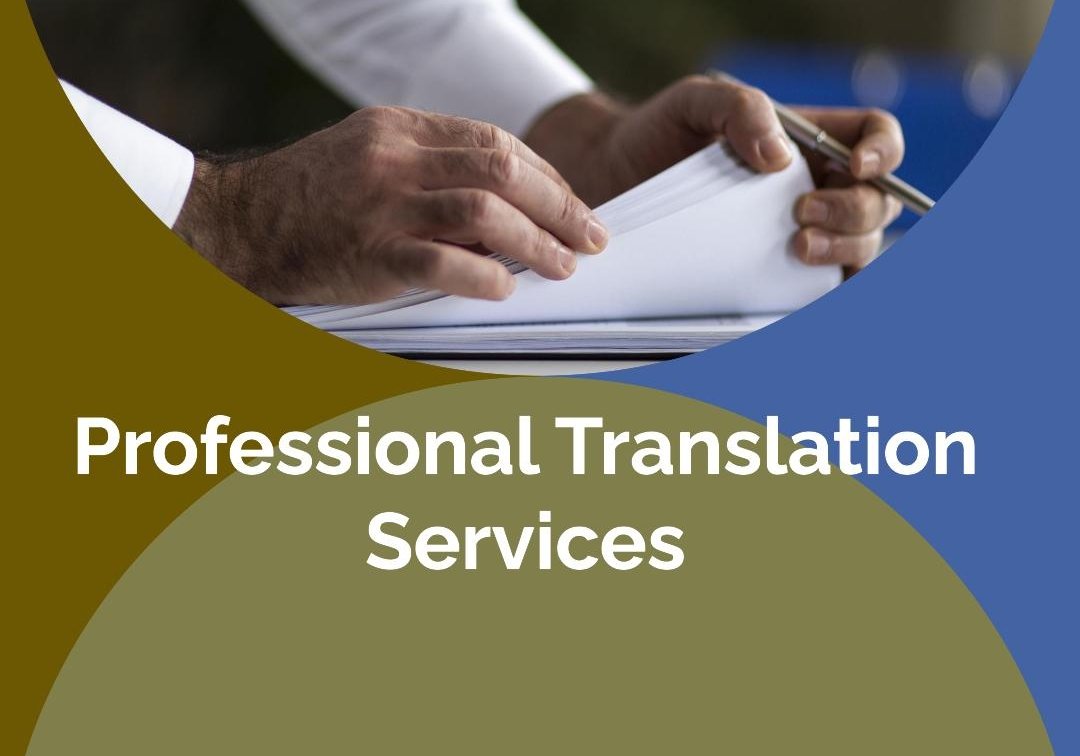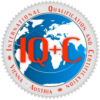ISO 17100:2015 Translation Services
ISO 17100:2015 is an international standard that specifies requirements for all aspects of the translation process directly affecting the quality and delivery of translation services. It provides a framework for translation service providers (TSPs) to ensure they meet the needs of their clients with high-quality translations.
Key Aspects of ISO 17100:2015
- Objective:
- To ensure the provision of high-quality translation services that meet client and other applicable specifications.
- Scope:
- Applicable to all TSPs, including in-house translation teams, freelancers, and translation agencies.
- Benefits:
- Ensures consistent quality and reliability of translation services.
- Enhances client satisfaction and trust.
- Facilitates continuous improvement and professional development.
- Provides a competitive edge by demonstrating adherence to an internationally recognized standard.
Requirements and Implementation
1. Human Resources:
- Qualifications and Competence: Translators must possess the required competencies, including formal education in translation or equivalent qualifications and experience.
- Professional Development: TSPs should encourage ongoing professional development for their translators to maintain and enhance their skills.
2. Pre-production Processes and Activities:
- Project Analysis: Conduct a thorough analysis of the client's requirements, including the purpose, target audience, and specific needs of the translation project.
- Feasibility: Assess the feasibility of the project in terms of resources, timeline, and technical requirements.
3. Production Process:
- Translation: The translation process should include a thorough understanding of the source text and its context, accurate rendering of meaning, and appropriate use of terminology.
- Review: Each translation must be reviewed by a second person (reviser) who is also a qualified translator. The review process ensures accuracy, consistency, and adherence to client specifications.
- Proofreading: Optional but recommended, proofreading involves a final check for any errors or inconsistencies before delivery.
4. Post-production Processes:
- Feedback and Revision: Implement a process for addressing client feedback and making necessary revisions.
- Final Verification: Ensure the final product meets all agreed-upon specifications and quality standards before delivery to the client.
5. Project Management:
- Project Planning: Develop a detailed project plan that outlines the scope, timeline, resources, and responsibilities.
- Communication: Maintain clear and consistent communication with the client throughout the project.
- Risk Management: Identify potential risks and implement strategies to mitigate them.
6. Client Relationship:
- Client Requirements: Clearly define and document client requirements at the start of the project.
- Client Feedback: Encourage and document client feedback to improve future projects.
- Confidentiality: Ensure the confidentiality and security of client information and documents.
7. Technical Resources:
- Translation Tools: Utilize appropriate translation tools and technologies, such as translation memory systems, terminology databases, and quality assurance tools.
- Data Security: Implement robust data security measures to protect client information and translation data.
Certification Process
- Preparation:
- Understand the requirements of ISO 17100:2015 and assess the current processes and practices of your organization.
- Gap Analysis:
- Conduct a gap analysis to identify areas that need improvement to meet the standard’s requirements.
- Implementation:
- Develop and implement procedures and practices that align with ISO 17100:2015. Ensure all staff are trained and aware of these procedures.
- Internal Audit:
- Conduct internal audits to verify the effectiveness of the implemented processes and identify any areas needing improvement.
- Management Review:
- Perform regular management reviews to assess the suitability, adequacy, and effectiveness of the translation service processes.
- Certification Audit:
- Engage an accredited certification body to perform an external audit. The audit will be conducted in two stages:
- Stage 1: Review of documentation to ensure compliance with ISO 17100:2015.
- Stage 2: On-site audit to verify the implementation of processes and procedures.
- Engage an accredited certification body to perform an external audit. The audit will be conducted in two stages:
- Certification Decision:
- Based on the audit findings, the certification body will decide whether to grant ISO 17100:2015 certification.
- Surveillance Audits:
- Periodic surveillance audits are conducted to ensure ongoing compliance with ISO 17100:2015.
- Recertification:
- The certification is typically valid for three years, after which a recertification audit is required.
ISO 17100:2015 Translation Services
ISO 17100:2015 is an international standard that specifies requirements for all aspects of the translation process directly affecting the quality and delivery of translation services. It provides a framework for translation service providers (TSPs) to ensure they meet the needs of their clients with high-quality translations.
Key Aspects of ISO 17100:2015
- Objective:
- To ensure the provision of high-quality translation services that meet client and other applicable specifications.
- Scope:
- Applicable to all TSPs, including in-house translation teams, freelancers, and translation agencies.
- Benefits:
- Ensures consistent quality and reliability of translation services.
- Enhances client satisfaction and trust.
- Facilitates continuous improvement and professional development.
- Provides a competitive edge by demonstrating adherence to an internationally recognized standard.
Requirements and Implementation
1. Human Resources:
- Qualifications and Competence: Translators must possess the required competencies, including formal education in translation or equivalent qualifications and experience.
- Professional Development: TSPs should encourage ongoing professional development for their translators to maintain and enhance their skills.
2. Pre-production Processes and Activities:
- Project Analysis: Conduct a thorough analysis of the client's requirements, including the purpose, target audience, and specific needs of the translation project.
- Feasibility: Assess the feasibility of the project in terms of resources, timeline, and technical requirements.
3. Production Process:
- Translation: The translation process should include a thorough understanding of the source text and its context, accurate rendering of meaning, and appropriate use of terminology.
- Review: Each translation must be reviewed by a second person (reviser) who is also a qualified translator. The review process ensures accuracy, consistency, and adherence to client specifications.
- Proofreading: Optional but recommended, proofreading involves a final check for any errors or inconsistencies before delivery.
4. Post-production Processes:
- Feedback and Revision: Implement a process for addressing client feedback and making necessary revisions.
- Final Verification: Ensure the final product meets all agreed-upon specifications and quality standards before delivery to the client.
5. Project Management:
- Project Planning: Develop a detailed project plan that outlines the scope, timeline, resources, and responsibilities.
- Communication: Maintain clear and consistent communication with the client throughout the project.
- Risk Management: Identify potential risks and implement strategies to mitigate them.
6. Client Relationship:
- Client Requirements: Clearly define and document client requirements at the start of the project.
- Client Feedback: Encourage and document client feedback to improve future projects.
- Confidentiality: Ensure the confidentiality and security of client information and documents.
7. Technical Resources:
- Translation Tools: Utilize appropriate translation tools and technologies, such as translation memory systems, terminology databases, and quality assurance tools.
- Data Security: Implement robust data security measures to protect client information and translation data.
Certification Process
- Preparation:
- Understand the requirements of ISO 17100:2015 and assess the current processes and practices of your organization.
- Gap Analysis:
- Conduct a gap analysis to identify areas that need improvement to meet the standard’s requirements.
- Implementation:
- Develop and implement procedures and practices that align with ISO 17100:2015. Ensure all staff are trained and aware of these procedures.
- Internal Audit:
- Conduct internal audits to verify the effectiveness of the implemented processes and identify any areas needing improvement.
- Management Review:
- Perform regular management reviews to assess the suitability, adequacy, and effectiveness of the translation service processes.
- Certification Audit:
- Engage an accredited certification body to perform an external audit. The audit will be conducted in two stages:
- Stage 1: Review of documentation to ensure compliance with ISO 17100:2015.
- Stage 2: On-site audit to verify the implementation of processes and procedures.
- Engage an accredited certification body to perform an external audit. The audit will be conducted in two stages:
- Certification Decision:
- Based on the audit findings, the certification body will decide whether to grant ISO 17100:2015 certification.
- Surveillance Audits:
- Periodic surveillance audits are conducted to ensure ongoing compliance with ISO 17100:2015.
- Recertification:
- The certification is typically valid for three years, after which a recertification audit is required.

Why i-LICS Certification?
ISO 17100:2015 sets a clear and comprehensive framework for translation service providers to deliver high-quality and consistent translation services. By adhering to this standard, TSPs can enhance their credibility, improve client satisfaction, and ensure continuous improvement in their processes and services. This standard not only helps in achieving operational excellence but also provides a competitive advantage in the translation industry.

Why i-LICS Certification?
ISO 17100:2015 sets a clear and comprehensive framework for translation service providers to deliver high-quality and consistent translation services. By adhering to this standard, TSPs can enhance their credibility, improve client satisfaction, and ensure continuous improvement in their processes and services. This standard not only helps in achieving operational excellence but also provides a competitive advantage in the translation industry.
Need help? Book a meeting at a time to suit your schedule
If you need assistance, we're here to help! You can book a call with us at a time that suits your schedule. Simply let us know your availability. Whether you have questions, need guidance, or require assistance with our services, we're committed to ensuring you receive the help you need. Contact us today to schedule your call!
Certification Milestones
-
Free strategic meeting
-
Your tailored proposal
-
Confirmation
-
Stage 1 Audit date
-
Stage 2 Audit date (Certification)
-
Obtain your Certificate
Need help? Book a meeting at a time to suit your schedule
If you need assistance, we're here to help! You can book a call with us at a time that suits your schedule. Simply let us know your availability. Whether you have questions, need guidance, or require assistance with our services, we're committed to ensuring you receive the help you need. Contact us today to schedule your call!
Certification Milestones
-
Free strategic meeting
-
Your tailored proposal
-
Confirmation
-
Stage 1 Audit date
-
Stage 2 Audit date (Certification)
-
Obtain your Certificate


